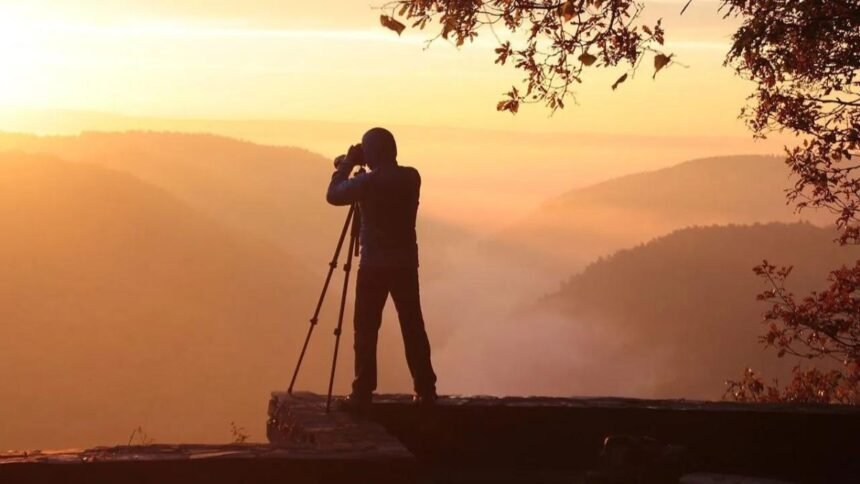Introduction to Photeeq Landscape Photography
Photeeq Landscape photography is an unadulterated and pure worship of nature’s unbounded magnificence. For fans who endeavor to embody clearing vistas and tranquil Landscapes, the art requests a sharp eye for detail and an exhaustive comprehension of the devices available to one. In the contemporary universe of photography, the ascent of Photeeq Landscape Photography has presented a variety of strong methods that can transform a simple preview into a suggestive story of the land. In this extensive exploration, we dissect the crucial elements that form the backbone of captivating Photeeq Landscape Photography: composition and aspect ratio.
Composition: The Heartbeat of Aesthetic Appeal
The sythesis of a photo is similar as the edge of a work of art; it characterizes the spatial game plan of components inside your Landscape. It fills in as the underlying mark of association between the watcher and the Landscape you’ve decided to deify. Photeeq Landscape Photography, specifically, benefits from a few dependable compositional procedures that intensify the charm of the normal world.
Rule of Thirds: Guiding the Viewer’s Gaze
The Standard of Thirds proposes isolating your picture with two similarly divided level and vertical lines, making a matrix with nine equivalent fragments. Advocates of this approach assert that adjusting the subject or central issues of interest at the convergence of these lines or along them can make more strain, energy, and interest in the piece than just focusing the subject.
In the context of a sweeping landscape, this can mean positioning the horizon along the top or bottom third line, and choosing prominent natural elements like a tree or mountain to reside at a power point. This method encourages the eyes to move naturally throughout the Landscape, offering a dynamic viewing experience.
Leading Lines: Inviting the Viewer to Explore
Lines inside a Landscape — be they straight, bended, or corner to corner — can be utilized to coordinate the watcher’s look and convey a feeling of profundity or viewpoint. Streets, coastlines, and pathways are normal driving lines that can direct the eyes toward the essential focal point of the arrangement, supporting the story string that integrates the picture.
Symmetry and Patterns: Nature’s Impeccable Design
There’s a profound appeal in the symmetrical bounty that nature often presents. Mirrored reflections on water, the radial symmetry of a flower, or the repetitive alignment of trees in a forest heighten the aesthetic impact of a photograph. Harnessing these natural occurrences in your composition can produce a sense of harmony that resonates with the viewer.
Aspect Ratio: The Silent Storyteller
The viewpoint proportion of a photo is the corresponding connection between the width and level of the picture. It’s an unpretentious yet enticing component in the narrating qualities of a Landscape photo. With Photeeq Landscape Photography, the choice of aspect ratio can shift the mood, focus, and even the narrative entirely.
Common Ratios in Landscape Photography
The industry has favored specific aspect ratios over time, with 3:2 being the standard for many DSLRs and 4:3 for Micro Four Thirds systems. Wider formats like 16:9 and 1.85:1 are often associated with cinematic or grand vista Landscapes, while square ratios can add a serene, contained feeling to the image’s ambiance.
Impact on Visual Storytelling
While aspect ratio is often a technical decision made at the point of capture or in post-processing, it has profound implications for the final arrangement of the image elements. Wide formats excel at capturing expansive horizons and the large stature of environmental subjects, while more square aspects can enhance intimacy and focus on detailed elements within the landscape.
Techniques and Tips for Breathtaking Landscapes
To excel at Photeeq Landscape Photography, it is fundamental for not just handle the hypothetical underpinnings of piece and viewpoint proportion yet in addition to apply reasonable procedures that refine these components.
Framing and Framing Devices: Setting Boundaries with Purpose
The use of natural or man-made framing devices such as arches, windows, and overhanging branches can provide a compelling context for the landscape and draw attention to the central theme. They create a visual border that accentuates the beauty within, leading to a more structured and story-driven composition.
Balancing Elements: Harmony in Hues and Masses
Balance in a landscape photograph is achieved by the arrangement of visual elements such that the image’s weight is distributed evenly. A symmetrical composition can be balanced, but so can a deliberately asymmetrical one, with contrasting colors, textures, or sizes counteracting the physical dimensions with visual weight and appeal.
Light and Color Considerations: The Play of Radiance and Chromatics
The magic of Photeeq Landscape Photography often hinges on the interplay between natural light and the coloring of the outdoors. The golden hours of dawn and dusk cast a warm glow that adds drama and dimension to the Landscape. The approach to capturing colors in a landscape is both an art and a science, from employing the white balance to accentuating the vividness and contrast in post-processing.
Conclusion
Photeeq Landscape Photography is an art form and a powerful medium that allows you to preserve the grandeur of the outdoors. By understanding and implementing the principles of composition and aspect ratio, you can elevate your craft to tell stories that are both timeless and emotion-stirring. Whether you stand atop a precipice as you capture the world sprawling beneath you or kneel in the resplendent serenity of a forest glade, the images you create have the potential to inspire, to captivate, and to endure. Start composing with Photeeq Landscape Photography today and chart your course toward mastery.
FAQs about Photeeq Landscape Photography
What Is the Best Time of Day for Photeeq Landscape Photography?
The best times for catching Landscapes are during the brilliant hours — soon after dawn or before dusk. During these periods, the light will in general be milder and hotter, giving profundity and aspect to your photos through broadened shadows and a rich variety range.
How Important Is Weather in Photeeq Landscape Photography?
Weather patterns assume a pivotal part in Landscape photography. Cloudy skies can diffuse normal light for even openness, while dynamic weather conditions, like tempests or haze, can add emotional strain and emotive capacity to your Landscapes. Understanding and expecting weather conditions can fundamentally influence the state of mind and account of your photographs.
Can I Achieve Professional Landscape Photos Without High-End Equipment?
Absolutely. While top of the line cameras and focal points can offer extra functionalities and higher goal, the substance of a convincing Landscape photo lies in grasping organization, lighting, and narrating. Talented utilization of these components frequently offsets the advantages of cutting edge hardware.
How Do I Choose the Right Aspect Ratio for My Landscape Photograph?
The decision of angle proportion relies upon the story you wish to tell and the components inside your Landscape. Wide perspective proportions are superb for broad perspectives and can convey the loftiness of Landscapes, while square or more bound proportions can concentrate on unambiguous subtleties or examples. Consider what part of the Landscape you need to underline and pick appropriately.
What Are Some Tips for Improving Composition in Landscape Photography?
Further developing structure includes practice and a comprehension of the basic standards. Utilize the Standard of Thirds to direct arrangement of interest focuses, utilize driving lines to bring the watcher’s look into the picture, balance the creation through variety and surface, and use regular outlining to concentrate consideration. Continuously be available to trying different things with alternate points of view to track down the most convincing creation.










